Xerophyllum asphodeloides, Turkeybeard, is a native perennial herbaceous plant that blooms late May/early June. You can't miss it when it is flowering. It has a showy white cluster of flowers on top of a single tall stalk. In New Jersey it is found in the Pine Barrens.
This is in our spring photo gallery collection.
Flowers
Inflorescence - flower cluster:
The showy white flower cluster can be almost a foot tall and a few inches wide and appears on top of a single long vertical stalk. The flower cluster is a raceme with flowers on a short pedicels (flower stems) of about equal length along the long stalk.
The flowers mature from the bottom up. The first 3 photos below show the progression from bottom to top.
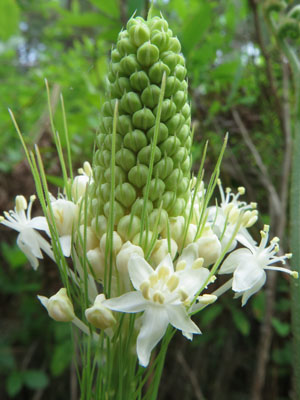


This is a top view of the flower cluster showing the cylindrical profile
a few inches across.
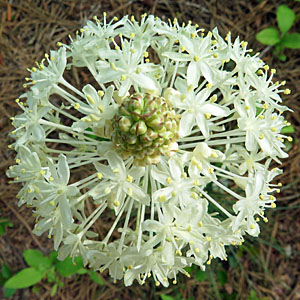
Individual flowers:
The white flowers are each almost a half inch across with 6 tepals (almost indistinguishable petals and sepals) and 6 stamens. If you look closely at the first two photos, the 3 white recurved (curved back on themselves) stigmas can be seen.

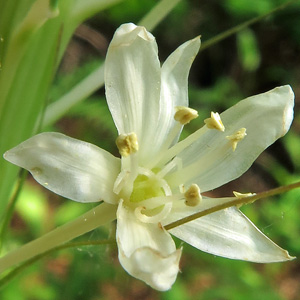
The bracts are apparent on the flower buds in the first photo below. The bracts are hard to see in the flower cluster. The second photo shows some bracts coming off of the flower pedicels.
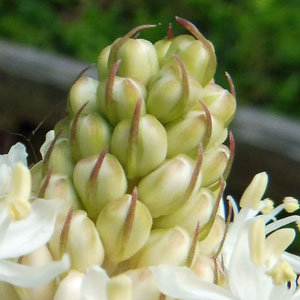

Stem Leaves & Basal Leaves
The stem leaves are narrow stiff needle-like leaves that grow vertically hugging the erect stem. The second photo shows a close up showing the attachment of the leaf to the stem.
The leaves are up to 6 inches long but shorter further up the stem.
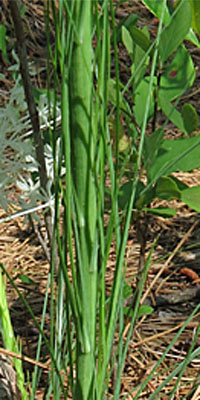

The basal leaves are narrow grass-like 12 to 20 inches long and form a stiff bristly clump. The first photo shows the basal leaves with a flower stem coming up from the middle. The second is a young plant without a flower stem.
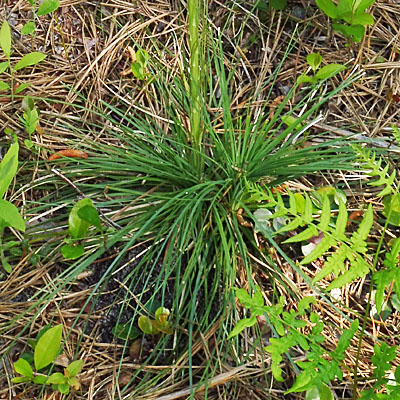
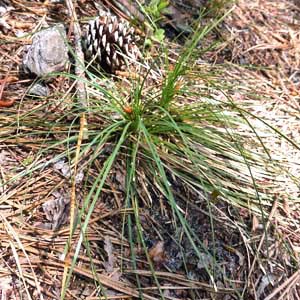
Plant & Habitat
The entire plant is 2 to 5 ft tall. In New Jersey it grows in the Pine Barrens.
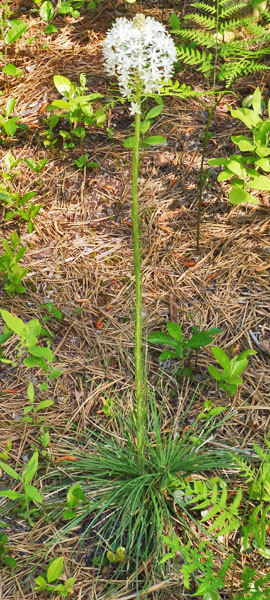
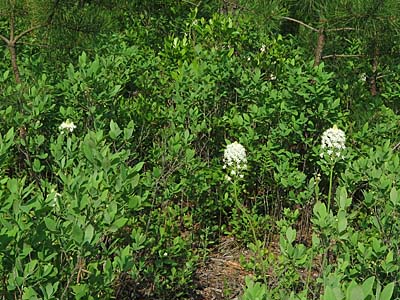
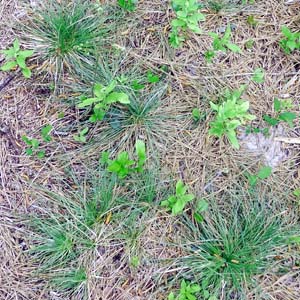
Turkeybeard reprodues sexually and vegetatively. It sends out tuberous rhizomes and sprouts from the rhizomes. The plant takes several years to flower, but when it does, it dies after fruiting. However, it sends out rhizomes before that.
Interestingly turkeybeard is found in two disjunct habitats - the pine barrens of southern New Jersey and the dry oak- pine communities along the Southern Appalachians. Both areas have dry, acidic, sandy or rocky soils and share similar plant species. Studies have shown that turkeybeard seems to benefit from fire and suggest that it could be fire-dependent. The plant's large rhizome could allow it to store water and become dormant underground where it can survive a fire.
All photos by H & M Ling. We saw these plants May 28, 2019 in the Pine Barrens. Only about a dozen were in bloom in one the area. They are not common and appear to be particular about their habitat.
Additional information
Additional information / references:
A good summary on distribution and habitat: https://saveplants.org/national-collection/plant-search/plant-profile/?CPCNum=6634
Another source of information: https://georgiawildlife.com/sites/default/files/wrd/pdf/fact-sheets/eastern_turkeybeard_2010.pdf
NJ : https://www.cumauriceriver.org/botany/Xerophyllum_asphodeloides.html
Detailed description: http://www.efloras.org/florataxon.aspx?flora_id=1&taxon_id=135103
Legal Status:
https://plants.usda.gov/core/profile?symbol=XEAS
NatureServe ConservationStatus: G4 Apparently Secure—Uncommon but not rare; some cause for long-term concern due to declines or other factors.
http://explorer.natureserve.org/servlet/NatureServe?searchName=Xerophyllum+asphodeloides
http://explorer.natureserve.org/granks.htm